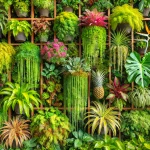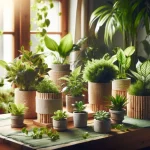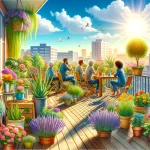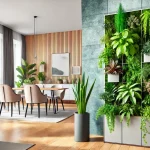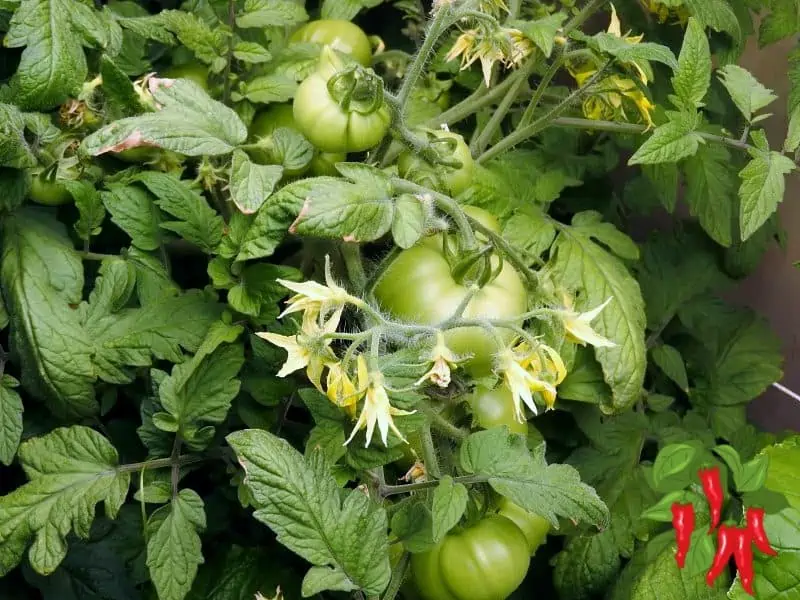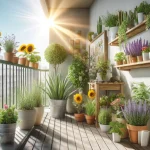This post may contain affiliate links. If you buy something from one of our links we may earn a commission. Thanks
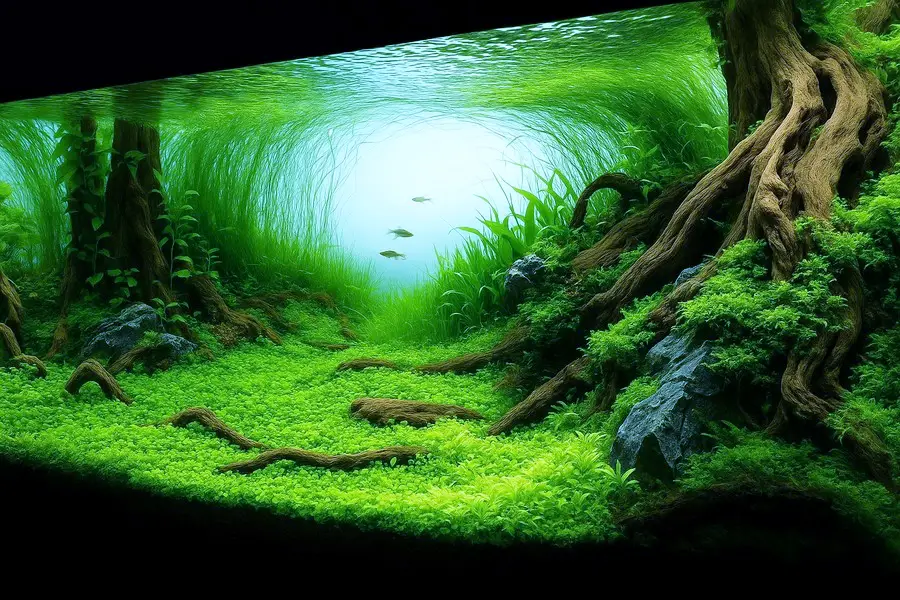
Planted Aquariums open the door to a whole new kind of underwater magic. You don’t need a green thumb or fancy gear to get started, just a little guidance and the right plants.
Once you see those first leaves unfurl and your fish cruising through their living jungle, you’ll wonder why you didn’t try it sooner.
Planted Aquariums Key Takeaways
- Planted Aquariums are freshwater tanks that combine live plants with fish to create a natural, balanced ecosystem.
- They improve water quality, reduce algae, and provide shelter for fish.
- With the right lighting, substrate, and care, planted tanks can thrive whether you’re a beginner or a seasoned aquascaper.
🌿 Planted Aquariums: The Complete Beginner’s Guide
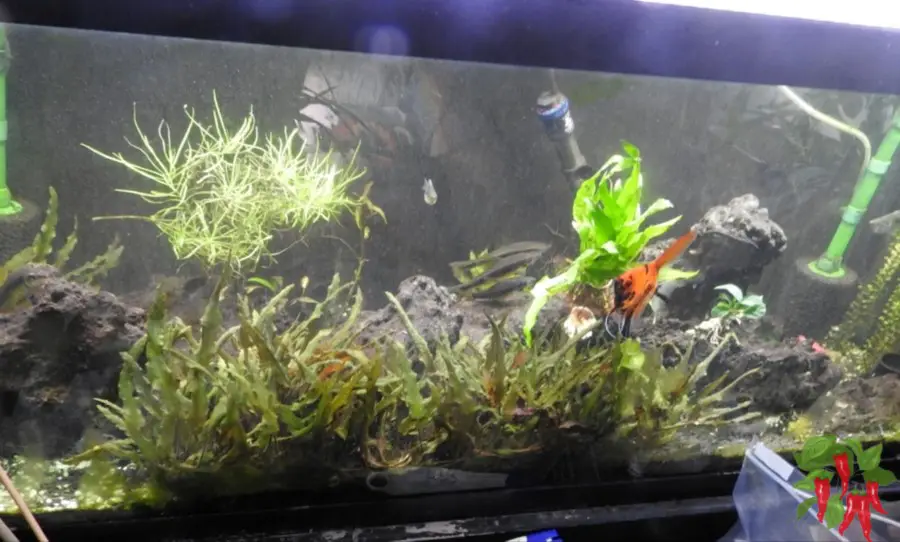
Planted Aquariums are more than just tanks with fish, they’re living, breathing underwater gardens.
Maybe you’ve tried keeping plants before and watched them melt, turn yellow, or get eaten by your fish.
Don’t worry—this guide makes it simple, fun, and totally doable, even if you’re brand new.
🌿 What Is a Planted Aquarium?
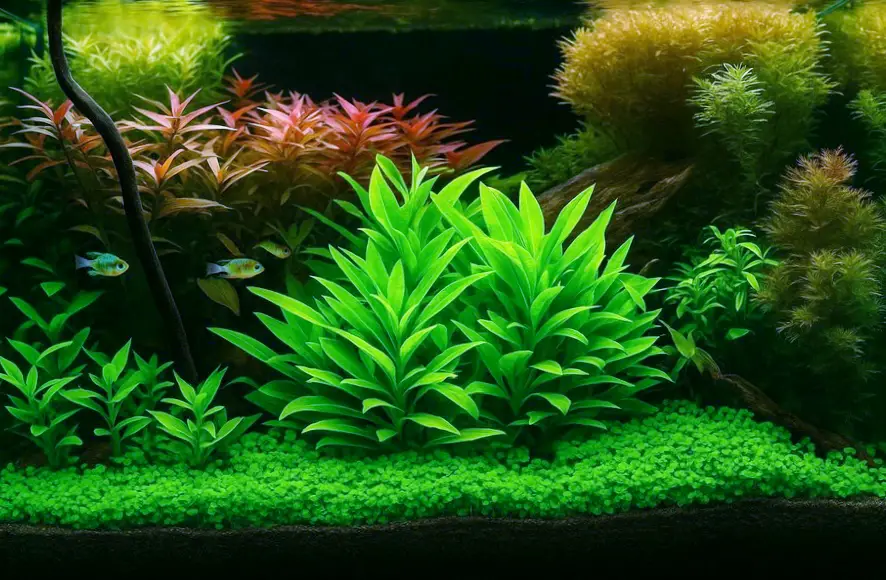
A planted aquarium is a fish tank filled with live aquatic plants—not plastic ones. It’s like a mini jungle under glass, where fish and plants live together in harmony.
✨ Why Planted Aquariums Are So Appealing
It’s not just about looks (though they are stunning). Planted aquariums offer:
- 🌱 Natural beauty – soft movement, lush greenery, and colorful layers
- 🧪 Biological balance – plants absorb waste and release oxygen
- 🐟 Healthier fish – more places to hide, explore, and feel at home
💧 Why People Love Them
Whether you’re new or experienced, planted aquariums give you:
- 📉 Less maintenance – plants help control algae and keep water clean
- 🎨 Creative freedom – arrange plants, rocks, and driftwood however you like
- 🧘♂️ Stress relief – watching a planted tank is calm and peaceful
If you’ve ever wanted to grow something green and care for fish, this hobby brings both worlds together beautifully.
A freshwater aquarium is a receptacle that holds one or more freshwater aquatic organisms for decorative, pet-keeping, or research purposes. Modern aquariums are most often made from transparent glass or acrylic glass. Typical inhabitants include fish, plants, amphibians, and invertebrates, such as snails and crustaceans. https://en.wikipedia.org/wiki/Freshwater_aquarium?
🧪 How Planted Aquariums Work
Planted aquariums aren’t just pretty, they’re smart. When everything works together, your tank becomes a little ecosystem that mostly runs itself.
🔄 A Living, Breathing System
Plants do a lot more than just sit there. Here’s how they help:
- 🌬️ Produce oxygen during the day, which your fish need
- 🧪 Absorb waste like ammonia, nitrites, and nitrates
- 🌱 Compete with algae by using up the same nutrients
⚙️ The Basics That Keep It All Going
To keep your planted tank healthy, three things matter most:
- 💡 Light – Plants need light to photosynthesize and grow
- 🪨 Substrate – Think of it like soil for your aquarium plants
- 💨 Nutrients – Fertilizers and sometimes CO₂ help boost growth
When the balance is right, you get cleaner water, healthier fish, and lush plant growth—all without a ton of effort.
🪴 Choosing the Right Plants
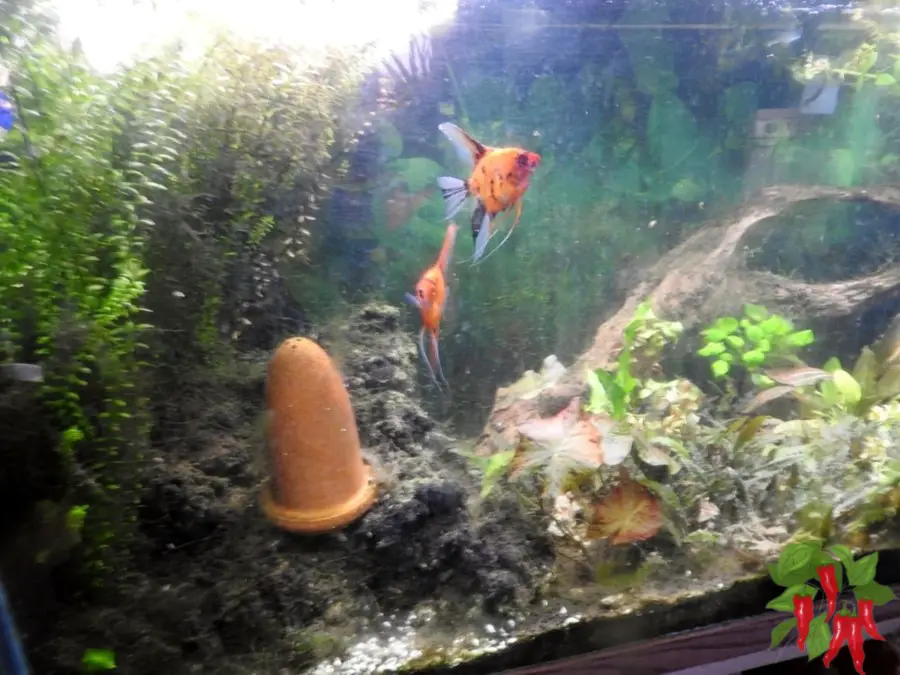
Not all aquatic plants are the same, and that’s a good thing. Some are super easy to grow, while others need a little more attention.
If you’re just getting started, go for plants that are low-maintenance and beginner-friendly.
🌱 Best Beginner Plants (Low Effort, High Reward)
These plants are tough, forgiving, and don’t ask for much:
- Java Fern – 💚 Slow-growing and doesn’t need to be planted in soil
- Anubias – 🌿 Hardy, low light, and perfect for attaching to driftwood
- Amazon Sword – 🗡️ Great for background foliage and easy to care for
- Hornwort – 🧵 Floats or plants, fast-growing and great for removing excess nutrients
- Java Moss – 🌾 Versatile, easy to grow, and ideal for shrimp tanks
🌊 Where to Place Each Type
Think of your tank like a little landscape:
- ⛰️ Background plants – Tall and bushy (e.g., Amazon Sword, Vallisneria)
- 🪨 Midground plants – Medium size, add fullness (e.g., Cryptocoryne)
- 🪴 Foreground plants – Short and compact (e.g., Dwarf Hairgrass, Anubias Nana)
- 🌊 Floating plants – No planting needed (e.g., Frogbit, Duckweed, Water Lettuce)
Start simple, mix textures, and watch your tank turn into a lush underwater garden—no green thumb required.
🪨 Substrates and Hardscape Basics
Think of your tank’s bottom layer and decorations as the foundation of your planted aquarium. The right setup makes your plants thrive and your tank look amazing.
🌾 Why Substrate Matters
Plants need something to anchor their roots—and pull nutrients from. Here are your main options:
- 🪱 Inert gravel or sand – Looks nice, but needs root tabs or liquid ferts
- 🧪 Nutrient-rich planted substrates – Like ADA Aqua Soil, Eco Complete or Fluval Stratum; perfect for root feeders
- 🌿 Mixes – A combo of rich soil under a gravel or sand cap gives you the best of both
💡 Pro tip: If you’re growing rhizome plants (like Java Fern or Anubias), don’t bury them! Just tie them to rocks or wood.
🪵 Hardscape: Rocks, Wood, and More
Hardscape gives your tank structure, depth, and personality. It’s also where many plants like to cling or grow around.
Popular materials include:
- 🪨 Seiryu stone or dragon stone – Beautiful textures, great for aquascaping
- 🌳 Driftwood (like spider wood or Malaysian) – Adds natural beauty and tannins
- 🪵 Slate or lava rock – Lightweight and plant-friendly
Arrange your hardscape first, then plant around it to create flow and layers. It’s like decorating a room—just underwater.
💡 Lighting Requirements
Light is the fuel that keeps your plants growing. Get it right, and your tank will thrive. Get it wrong, and you’ll either grow algae or end up with sad, struggling plants.
🔦 How Much Light Do Plants Need?
Most aquatic plants need:
- ⏱️ 8–10 hours of light per day
- 💡 The right intensity (not too weak, not too strong)
- 🌅 Consistent timing—a cheap timer makes this easy
Too much light? You’ll get algae.
Too little? Your plants may melt or turn yellow.
💡 Types of Lighting for Planted Tanks
You don’t need fancy gear to start, but here are the common options:
- 🔋 LEDs – Most popular and energy efficient (look for full-spectrum)
- 💡 Fluorescents (T5/T8) – Affordable but outdated for many hobbyists
- ☀️ Natural light – Okay in small amounts but can cause algae spikes
💬 Pro tip: Stick with a light made for planted tanks—brands like NICREW, Finnex, or Fluval are solid picks for beginners.
💨 CO₂ and Fertilizer: Do You Need Them?
Good news—you don’t need fancy gear to grow healthy plants. But if you want faster growth or more advanced species, CO₂ and fertilizers can take your tank to the next level.
🫧 What CO₂ Does for Plants
CO₂ is like plant food for growth. In high-tech tanks, it’s injected through a system to boost:
- 🌿 Faster, lusher plant growth
- 🌈 More vivid leaf colors
- 🚫 Less algae (when balanced right)
But you don’t need it for beginner plants like Java Fern or Anubias. Many hobbyists grow beautiful tanks without ever using CO₂.
💊 Fertilizer Options
Plants need nutrients—just like houseplants. Here’s how to feed them:
- 💧 Liquid fertilizers – Add directly to the water (easy for most tanks)
- 🪱 Root tabs – Stick into the substrate to feed root-heavy plants
- ⚖️ All-in-one solutions – Great for beginners (like Easy Green or Thrive)
💬 Quick tip: Start slow with fertilizers. Too much = algae problems.
So, do you need CO₂ and ferts? Not always. But they sure help if you’re chasing that “wow” factor.
🐠 Best Fish for Planted Aquariums
The right fish can make your planted tank pop and keep it balanced. Choose species that get along with plants, won’t dig them up, and help keep things clean.
🧡 Plant-Friendly Fish Picks
These peaceful fish look great and won’t mess up your aquascape:
- 🐟 Neon Tetras – Small, colorful, and love swimming in groups
- 🐠 Guppies – Super hardy and come in endless colors
- 🐡 Corydoras Catfish – Bottom dwellers that stir up debris (but not your plants)
- 🧹 Otocinclus – Tiny algae-eaters that stay out of the way
- 🐌 Mystery Snails – Great cleaners that glide around eating leftovers
🚫 Fish to Avoid (Unless You’re Experienced)
Some fish just don’t play nice with plants:
- 🐟 Goldfish – Constantly dig and munch on soft leaves
- 🐠 Cichlids – Big personalities, but they love to redecorate your tank… with their teeth
- 🐢 Plecos (big ones) – Can bulldoze plants as they grow
💡 Pro tip: Always research your fish before adding them—just because they’re cute doesn’t mean they’re plant-safe.
🦠 Common Challenges and How to Fix Them
Even the best planted tanks hit a few bumps. Don’t stress. Most issues are easy to fix once you know what’s going on.
🍃 Melting Plants
What it looks like: Leaves turn clear or fall apart.
Why it happens: New plants adjusting to your water.
Fix it: Trim the mushy parts and be patient—new growth will come!
🟡 Yellowing Leaves
What it means: Your plants are hungry.
Could be:
- Nitrogen or iron deficiency
- Poor lighting
- Old leaves (sometimes it’s normal)
🛠️ Fix it: Add a liquid fertilizer or root tab depending on the plant type.
💚 Algae Overgrowth
What it looks like: Green fuzz, brown slime, or black hair on glass and leaves.
Why it happens: Too much light, extra nutrients, or imbalanced CO₂.
🔧 Fix it:
- Reduce your light hours
- Do regular water changes
- Add algae eaters like Amano shrimp or Otocinclus
🚨 Plants Not Growing?
Check these:
- 💡 Is your light strong enough and on for 8–10 hours?
- 🌱 Are you using the right fertilizer?
- 🧪 Is your water too hard or soft?
💬 Good rule of thumb: If plants aren’t growing, algae will. Balance is everything.
🧰 Maintenance Tips for Long-Term Success
Keeping a planted aquarium healthy doesn’t take hours of work—but consistency is key. A little effort each week goes a long way toward keeping everything looking great.
🗓️ Weekly Routine
- 💧 Do a water change (20–30%) to remove built-up waste
- ✂️ Trim plants to prevent overcrowding and encourage new growth
- 🧽 Wipe down glass to keep algae in check
- 🧪 Test water parameters like pH, nitrates, and hardness
🔁 Monthly or As Needed
- 💡 Clean your filter—but don’t overdo it! Just rinse sponges in tank water
- 🪱 Re-dose root tabs if your root feeders are slowing down
- 🐌 Check on critters like snails or shrimp—they’re the clean-up crew
🧘♀️ Keep It Simple
You don’t have to micromanage every little detail. If your plants look healthy and your fish are active, you’re doing it right.
💬 Remember: A planted tank is a living system—it’s more about balance than perfection.
Here’s the next section, laid out with inspiration, examples, and your natural tone of voice:
🖼️ Aquascaping Inspiration and Styles
Aquascaping is like underwater landscaping, and it’s where planted aquariums really shine. You’re not just growing plants… you’re building a scene, a vibe, a slice of nature.
🎨 Popular Aquascaping Styles
Want to give your tank a look that wows? Try one of these styles:
- 🏞️ Nature Style – Inspired by forests, rivers, and cliffs. Uses driftwood and rocks with flowing plants like Java Fern and mosses.
- 🌷 Dutch Style – Rows of colorful plants with no hardscape. It’s lush, layered, and packed with variety.
- 🗻 Iwagumi Style – Minimalist with just rocks and a few plants. It’s all about balance, flow, and empty space.
- 🌿 Jungle Style – Let it grow wild! A little chaotic, a lot beautiful—great for beginners.
📐 Tips for Aquascaping Like a Pro
- 📏 Use the “rule of thirds” to place your main focal point off-center
- ⛰️ Vary heights and textures for depth and realism
- 🪵 Keep plant roots shaded with hardscape for better growth
- 🔁 Step back often while arranging—what looks good up close may feel off from a distance
💬 Bottom line: Your tank, your style. Start simple, get creative, and tweak as you grow.
🧠 Final Thoughts: Why Planted Aquariums Are Worth It
If you’ve been thinking about starting a planted tank, here’s your sign. It’s more than a hobby, it’s a peaceful little world you create and care for.
💚 Why People Love Planted Tanks
- 🐟 Better for fish – They feel safer, calmer, and more at home
- 🌱 Healthier water – Plants help filter out waste naturally
- 🎨 Endless creativity – Aquascaping is like painting with plants
- 🧘♂️ Great stress relief – Watching your tank is calming and addictive in the best way
You don’t need fancy gear or expert skills. Just start small, learn as you go, and enjoy the journey. Before long, you’ll have a tank that’s not just alive, but thriving.
https://staygreengarden.com/aquarium-plants-for-fish-tanks/
❓ FAQ: Planted Aquarium Basics
Starting out? You’re not alone. These are some of the most common questions folks ask when diving into planted aquariums.
Q. Do I need special soil for a planted aquarium?
A. Not always. Many beginner-friendly plants grow just fine in gravel or sand if you use root tabs. But if you want faster growth, nutrient-rich substrate helps.
Q. How many hours of light do aquatic plants need?
A. Most plants do best with 8–10 hours a day. Using a timer helps keep things consistent and avoids algae from too much light.
Q. Can I add fish right away after planting?
A. It’s best to wait. Let your tank cycle first so beneficial bacteria can build up. This helps avoid ammonia spikes that can harm fish.
Q. Do I need to inject CO₂?
A. Nope. Many plants grow great without it. But if you want faster growth or to try more advanced species, CO₂ can definitely help.
Q. Why are my plants turning yellow?
A. They might be missing nutrients—especially iron or nitrogen. Try adding a liquid fertilizer or root tabs depending on the plant type.
🌟 Conclusion: Ready to Grow Something Amazing?
Planted aquariums aren’t just beautiful—they’re surprisingly easy once you get the hang of it. You don’t need to be an expert or spend a ton to build something lush and healthy.
Start simple. Pick a few easy plants. Let your tank grow with you. And before you know it, you’ll have a living, breathing slice of nature right in your home.
So go ahead—grab that tank, pick your plants, and dive in. You’ve got this. 🌿🐟
Visit my Amazon Influencer Page for videos and gardening products Grow Your Own Garden

